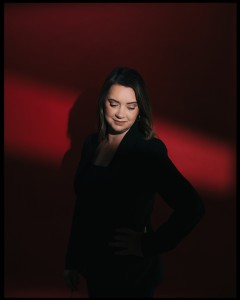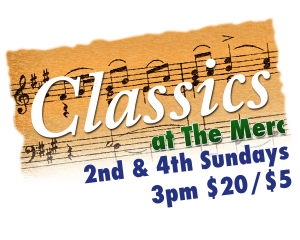Sunday, April 21, 2024, 3:00 p.m.
Gershwin Performing Arts Center | Murrieta Mesa High School
Today’s Program
Amy Beach (1867 – 1944)
Arr. Kenneth Atkins
Summer Dreams, Op. 47
1. The Brownies
2. Robin Redbreast
3. Twilight
4. Katy-dids
5. Elfin Tarantellle
6. Good Night
Antonin Dvorak (1841 – 1904)
Serenade for Winds in D Minor, Op. 44, B. 7
1. Moderato quasi marcia
2. Menuetto. Trio.
3. Andante con moto
4. Finale. Allegro molto
INTERMISSION
Ludwig van Beethoven (1770 – 1827)
Symphony No. 2 in D Major, Op 36
1. Adagio molto. Allegro con brio.
2. Larghetto
3. Scherzo. Allegro. Trio.
4. Allegro molto
Thanks to the Murrieta Valley Unified School District for their support of this concert.
About Our Artistic Director and Conductor
Dana Zimbric is marking her 14th season as Artistic Director and Conductor of the California Chamber Orchestra.
In addition to her work with us, she is Music Director of the Classics Philharmonic Orchestra, which performs educational programs for San Diego area students, and recently made her conducting debut with the San Diego Symphony.
Dana’s past conducting experience includes positions with the San Diego Youth Symphony, Avante Chamber Orchestra, Orchestra Nova San Diego, and the University of Wisconsin Chamber and Symphony Orchestras.
An accomplished clarinetist, Dana holds a Bachelor of Music in Clarinet Performance and a Master of Music in Orchestral Conducting from the University of Wisconsin. She lives in San Diego with her husband and two young daughters.
Members of the California Chamber Orchestra
Violin I
Missy Lukin (Concertmaster)
Isaac Allen
Angela Xing
Batya MacAdam-Somer
Violin II
Kenneth Liao (Principal)
Tiffany Modell
Healy Henderson
Victoria Bietz
Viola
Michael Molnau (Principal)
Linda Piatt
Annabelle Terbetski
Cello
Alex Greenbaum (Principal)
Margaret Tait
Elizabeth Brown
Bass
PJ Cinque (Principal)
Flute
Pam Martchev (Principal)
Kate Prestia-Schaub
Oboe
Andrea Overturf (Principal)
Ellen Hindson
Clarinet
Frank Renk (Principal)
Sheryl Renk
Bassoon
Leyla Zamora (Principal)
Ryan Simmons
Horn
Keith Popejoy (Principal)
Darby Hinshaw
Cynthia McGregor
Trumpet
Elizabeth Howard (Principal)
Rachel Allen
Timpani
Beverly Reese Dorcy (Principal)
Orchestra Personnel Manager and Music Librarian
Michael Molnau

California Chamber Orchestra musicians in this concert are members of The American Federation of Musicians, Local 325
Program Notes
American composer Amy Marcy Cheney Beach (1867-1944) was born in New Hampshire and spent her life in New England. Her mother, an amateur singer and pianist, was Beach’s first music teacher. Beach displayed prodigious musical talent very early on. From the age of 6, she had perfect pitch and synesthesia, a condition in which stimuli in one sensory area links to a second sensory area. In Beach’s case, her synesthesia linked musical keys to colors. Beach’s connections between musical keys and colors were consistent throughout her lifetime.
In 1885, at the age of 18, Beach made her Boston Symphony debut as soloist on Chopin’s Concerto in F minor. In 1894, she composed her Symphony in E minor, Op. 32 “Gaelic Symphony” which premiered in Boston in 1896. This symphony was the first work by an American woman to receive international attention.
Beach composed a collection of four-hand piano works called Summer Dreams in 1901. During this time, she was married to a much older doctor whose ideas of Beach’s musical career were both supportive and restrictive. He was supportive in the sense that he understood his wife’s immense talent and encouraged her to grow and become a composer. Restrictive because he did not support Beach performing in public and demanded that any income Beach received from performances or compositions go directly to charity. His traditional views of marriage strictly prohibited Beach from earning her own money.
Beach’s Summer Dreams was inspired by the New England summer landscape. And like many other composers of this time, she relied on textual imagery for each of the movements. The work contains six movements: The Brownies, which references Shakespeare fairies; Robin Redbreast, in the key of G major, which was Beach’s red key; Twilight, inspired by words of her own; Katy-dids, inspired by Walt Whitman; Elfin Tarantelle, using Shakespeare’s words of nighttime fairies; Good Night, inspired by words of Lockhart.
According to the Library of Congress, Beach’s rise to prominence excelled in the second half of her life:
“After her husband’s death in 1910, Beach sailed for Europe to establish her reputation there as both a performer and composer. She received enthusiastic reviews for recitals in Germany and for her symphony and concerto, which were performed in Leipzig and Berlin. She returned to the U.S. in 1914, where she concertized in the winters and composed in the summers. In 1921 she became a fellow at the MacDowell Colony in Peterborough, New Hampshire, where she composed most of her later works.
Beach assumed many leadership positions, often in advancing the cause of American women composers. She was associated with the Music Teachers National Association and the Music Educators National Conference. In 1925, she was a founding member and first president of the Society of American Women Composers. Following her death on December 27, 1944, Beach’s royalties were given to the MacDowell Colony, as prescribed in her will.”
The California Chamber Orchestra performs an arrangement for string orchestra by Kenneth Atkins.
Czech composer Antonin Dvorak (1841-1904) wrote his Serenade for Winds in D minor in the summer of 1878. The piece contains four distinct movements, beginning with a march-like theme. The work showcases the rich, dark, tonal colors of the winds and low strings.
The second movement is a Minuet and Trio with an uplifting and positive mood. Dvorak expertly crafts the wind voicings to best display each instrument’s unique and special abilities. As the movement rolls along, Dvorak displays his ability to create music that is both lyrical and rhythmic, often at the same time, as long phrases of the melody are supported by bass punctuations that are both on and off the beats. The middle Scherzo (“joke”) is fun and lively and serves as an enthusiastic contrast to the Minuet theme.
The third movement is slow but moves along thanks to a syncopated rhythmic heartbeat in the horns. Dvorak is king of melodic material, taking the listener on a journey through darker emotive passages, only to return to lovely melodic fragments of the beginning.
The finale begins with a new strength and energy, with the ensemble in unison. With a nod to the style of a Slavic dance, Dvorak keeps the pace moving forward with energy and vigor. The piece momentarily brings back themes from the slow movement and the opening march and then flies to an exhilarating conclusion in D major.
Ludwig van Beethoven (1770-1827) traveled with his patron Prince Karl Lichnowsky to the countryside in the summers. While there, he would often compose new works in the beautiful surroundings. Beethoven’s second symphony was composed in the summer and fall of 1802. Letters from this time suggest Beethoven was beginning to realize his hearing loss was significant and untreatable. Though he kept this personal information mostly secret, he had started sharing his health information with those closest to him.
“But what a humiliation for me when someone standing next to me heard a flute in the distance and I heard nothing, . . . Such incidents drove me almost to despair, a little more of that and I would have ended my life—it was only my art that held me back. Ah, it seemed to me impossible to leave the world until I had brought forth all that I felt was within me. . . . Patience, they say, is what I must now choose for my guide, and I have done so—I hope my determination will remain firm to endure until it pleases the inexorable Parcae to break the thread. . . . Forced to become a philosopher already in my 28th year, . . . Divine One, thou seest my inmost soul, thou knowest that therein dwells the love of mankind and the desire to do good.” Beethoven in a letter to his brothers known as the Heiligenstadt Testament, written October 1802 as he was finishing Symphony No. 2.
People familiar with Beethoven’s Symphonies may be less familiar with his Second symphony. It never quite caught on like some of his other works– Symphony No. 5 (da-da-da-DUM), Symphony No. 6 (“Pastorale”), or the epic Symphony No. 9 (“Choral”).
However, Beethoven’s Symphony No. 2 in D major is filled with charming and clever surprises. The symphony’s general mood is bright, with moody moments mixed in. Considering Beethoven’s dark personal struggles at the time, it is no wonder that the symphony shows some signs of the composer’s inner turmoil.
The first movement begins with a slow introduction contrasting a short, fanfare-like motive with a lyrical and smooth countertheme. After the introduction, the speed quickens and is filled with nervous excitement and energy.
The second movement marked Larghetto, has a slower tempo and is the second-longest movement of the symphony. Beethoven takes his time developing the melody and utilizes fragments of the first movement themes in the conclusion.
The third movement was a surprise to Beethoven’s contemporaries. Traditionally the third movements of symphonies were minuets, based on a moderate tempo dance in three. Beethoven was looking ahead when he composed a fast scherzo instead, which was certainly too quick to be based on a dance. The movement also has a middle trio section, which keeps the quick pace.
The finale of this movement continues the fast and energetic feeling. The composer asks the orchestra to play “allegro molto” (very fast!) taking the audience on an exciting conclusion.
Beethoven would go on from his second symphony and continue to expand the boundaries of what a symphony could be. Glimpses of his adventurous compositional powers were clearly evident from his second symphony.
— Dana Zimbric
Thank You to Our Sponsors and Donors
Society Sponsors
Judy Call
Prudhomme Associates, CPAs
City of Temecula
Leslie and Joseph Waters
Season Sponsors
Mark Margolin
Nicola Helm & Stephen Ryder
Education Sponsors
Craig Carper, LaPointe Wealth Management
Murrieta Rotary
Concert Sponsors
Susan & Ken Dickson
Walt Fidler
Soloist’s Circle
Kiyoe MacDonald
Concertmaster’s Circle
Terry Kvitky
Kathryn McCarty
Barry Weiss
Rudy Wokoek
Principal’s Circle
John Welniak
Musician’s Circle
Candace Flint
Karen Hartnett
Susan Humphrey
Sarah Ivar
Martha Minkler
Sana Quijada



